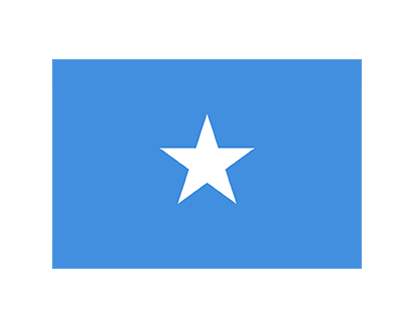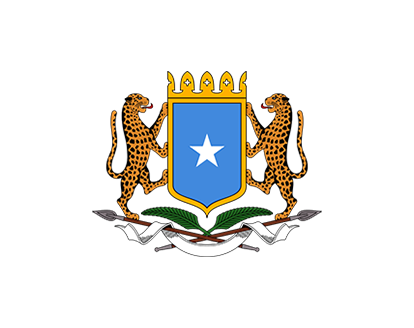Overview
Somalia, officially the Federal Republic of Somalia, is the easternmost country in continental Africa.
The country is located in the Horn of Africa and isbordered by Ethiopia to the west, Djibouti to the northwest,
Kenya to the southwest, the Gulf of Aden to the north, and the Indian Ocean to the east.Somalia has the longest
coastline on Africa's mainland. Somalia has an estimated population of 19.1 million, of which over 4 million live in
the capital and largest city, Mogadishu. the official languages of the country are Somali and Arabic. The people of
Somalia are Muslims (sunni).
| Name | Federal Republic of Somalia |
| Capital city | Mogadishu |
| currency | Shiling Somalia (SOS) |
| time Zone | UTC+3 (East Africa Time ) |
| Religion | Islam Sunni |
| Calling Code | +252 |

The flag of the Federal Republic of Somalia is a light blue rectangle in the centre of which is a white star with five equal points. the national flag of Somalia was adopted on October 12, 1954, and was designed by Mohammed Awale Liban the flag's five-pointed star represents the five regions in which Somalis reside.

The emblem of the Federal Republic of Somalia is a blue shield with a gold frame, in the centre of which is a silver-coated, five-pointed star. The shield is surmounted by a decorated emblem with five golden heads, with two lateral ones halved. The shield is borne from the sides by two leopards facing each other under the lower point of the shield, along with two palm leaves, which are interlaced with a white ribbon.

The national anthem of Somalia is titled "Qolobaa Calankeed," which translates to "Every Nation Has Its Own Flag" in English. The anthem emphasizes the importance of national pride and unity. The lyrics encourage citizens to wake up, support their country, and rely on one another Written and composed by Abdullahi Qarshe, it was adopted on 1 August 2012 with the passage of the Somali national constitution